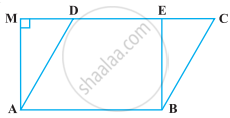Advertisements
Advertisements
Question
ABCD is a quadrilateral whose diagonal AC divides it into two parts, equal in area, then ABCD ______.
Options
is a rectangle
is always a rhombus
is a parallelogram
need not be any of (A), (B) or (C)
Solution
ABCD is a quadrilateral whose diagonal AC divides it into two parts, equal in area, then ABCD need not be any of (A), (B) or (C).
Explanation:
The quadrilateral ABCD need not be any of rectangle, rhombus and parallelogram because if quadrilateral ABCD is a square then its diagonal AC also divides it into two parts which are equal in area.
APPEARS IN
RELATED QUESTIONS
Which of the following figures lie on the same base and between the same parallels. In such a case, write the common base and the two parallels.
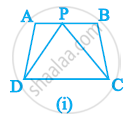
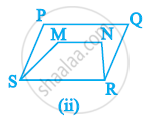
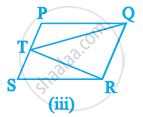
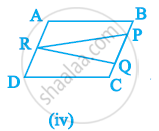
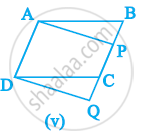

In the below figure, compute the area of quadrilateral ABCD.
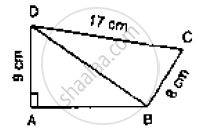
In the below figure, PQRS is a square and T and U are respectively, the mid-points of PS
and QR. Find the area of ΔOTS if PQ = 8 cm.

In the below fig. ABCD is a trapezium in which AB || DC. Prove that ar (ΔAOD) =
ar(ΔBOC).
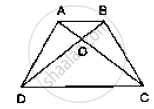
In Fig. below, CD || AE and CY || BA.
(i) Name a triangle equal in area of ΔCBX
(ii) Prove that ar (Δ ZDE) = ar (ΔCZA)
(iii) Prove that ar (BCZY) = ar (Δ EDZ)

In the below fig. ABCD is a trapezium in which AB || DC and DC = 40 cm and AB = 60
cm. If X and Y are respectively, the mid-points of AD and BC, prove that:
(i) XY = 50 cm
(ii) DCYX is a trapezium
(iii) ar (trap. DCYX) =`9/11`ar (trap. (XYBA))
In the below figure, ABCD is parallelogram. O is any point on AC. PQ || AB and LM ||
AD. Prove that ar (||gm DLOP) = ar (||gm BMOQ)
If bisectors of ∠A and ∠B of a quadrilateral ABCD meet at O, then ∠AOB is
In the following figure, if parallelogram ABCD and rectangle ABEM are of equal area, then ______.
